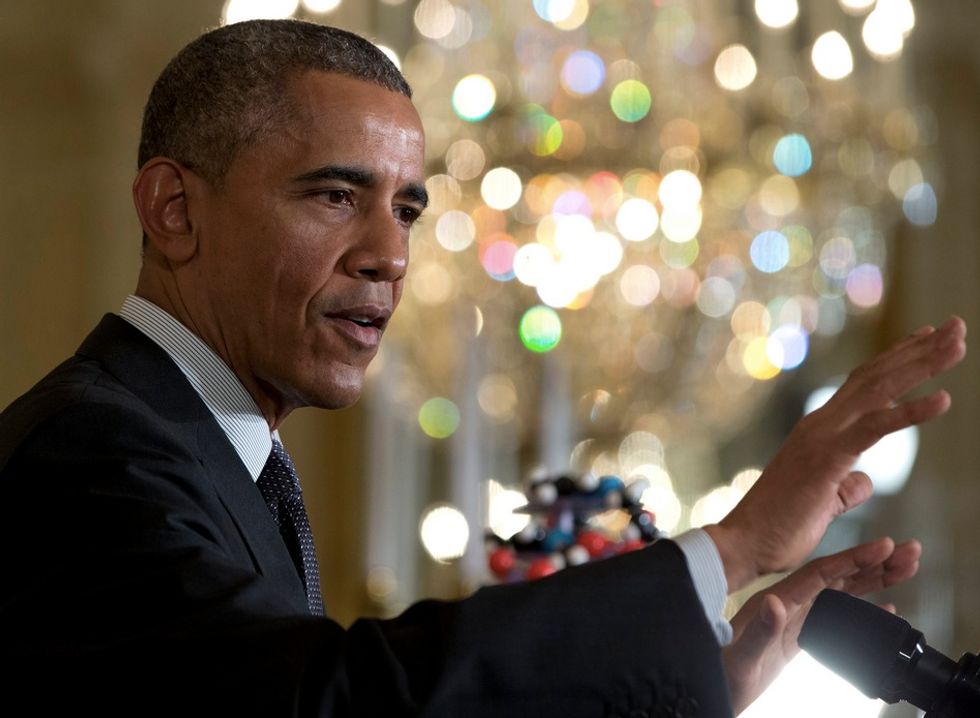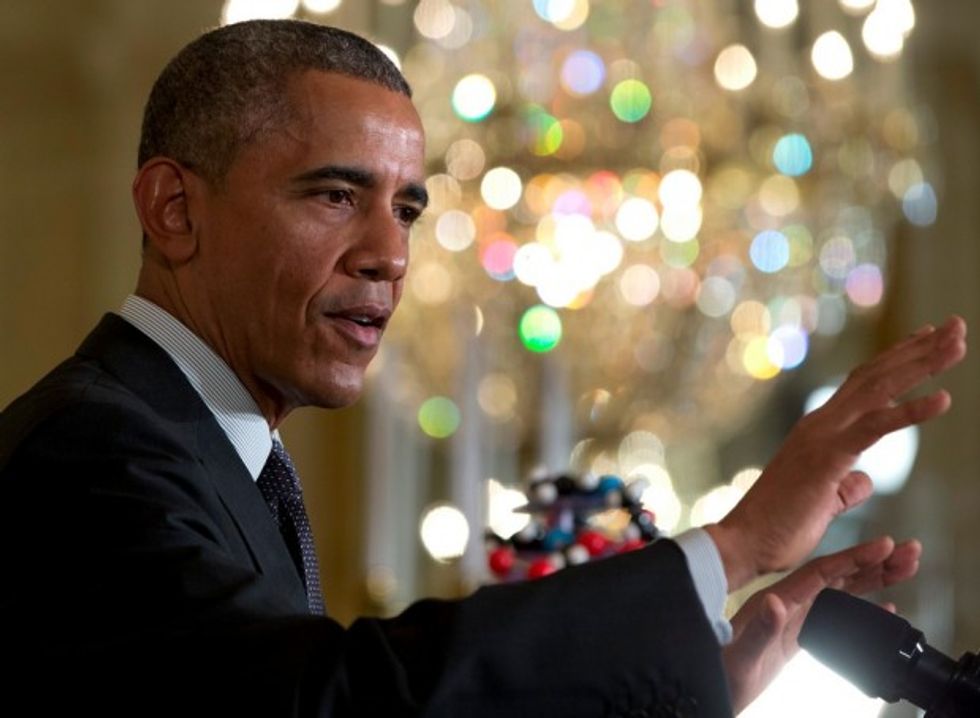
In a Friday, Jan. 30, 2015 file photo, President Barack Obama speaks in the East Room of the White House in Washington. (Image source: AP/Carolyn Kaster, File)

For the first time in his six years as president, Barack Obama met behind closed doors with an exclusively domestic group of Muslims for about an hour on February 4. They covered the boringly predictable topics, judging by the official readout, accounts by participants, and news reports.
What about the guest list? It includes a curiously unimpressive and motley collection of modestly accomplished individuals of little renown:
Here are my thoughts: It hardly needs to be said, but I’ll say it anyway: Almost all the guests are Islamists while not a single anti-Islamist made the cut.
Eight participants are affiliated with organizations, though one of them, the Arab-American Institute, is ethnic, not Islamic. Has the White House staff not yet learned that not all Arabs are Muslims, and especially not all Arab-Americans?
Six participants do other things: a basketball coach (Abdul-Qaadir), a professor (Jackson), an imam (Magid), a businessman (Mokhtarzada), a “comedian” (Obeidallah), and a university chaplain (Rashad). Hard to see how these folks are “leaders.”

A White House decision to tone down what is by nature a controversial meeting probably explains the absence of notable religious figures such as Zaid Shakir, Siraj Wahaj, or Hamza Yusuf. This would also explain the absence of big names from Muslim-American institutional life such as Nihad Awad or Louis Farrakhan.
The list contains several surprises: Two lowly staffers represented the Muslim Public Affairs Council and Ta’leef. The obscure Bilqis Abdul-Qaadir represented basketball, rather than the famed Kareem Abdul-Jabbar or Hakeem Olajuwon. And where are such Muslim-American stars such as Muhammad Ali, Farouk El-Baz, Omar Sharif, McCoy Tyner, and Ahmed H. Zewail?
MPAC made the cut but not the Council on American-Islamic Relations; the latter must be seething, especially as it is hoping for U.S. government assistance to get off the United Arab Emirates' terrorism list. This fits a long-term pattern of preferring tamer Islamists over more aggressive ones. Same story with Islamic Society of North America and Islamic Circle of North America.
In conclusion, this meeting appears to have been pro-forma, part of the political preparation for the “Summit on Countering Violent Extremism” to be held at the White House on February 18. The president invested an hour to protect his standing among his Islamist constituency.
–
TheBlaze contributor channel supports an open discourse on a range of views. The opinions expressed in this channel are solely those of each individual author.